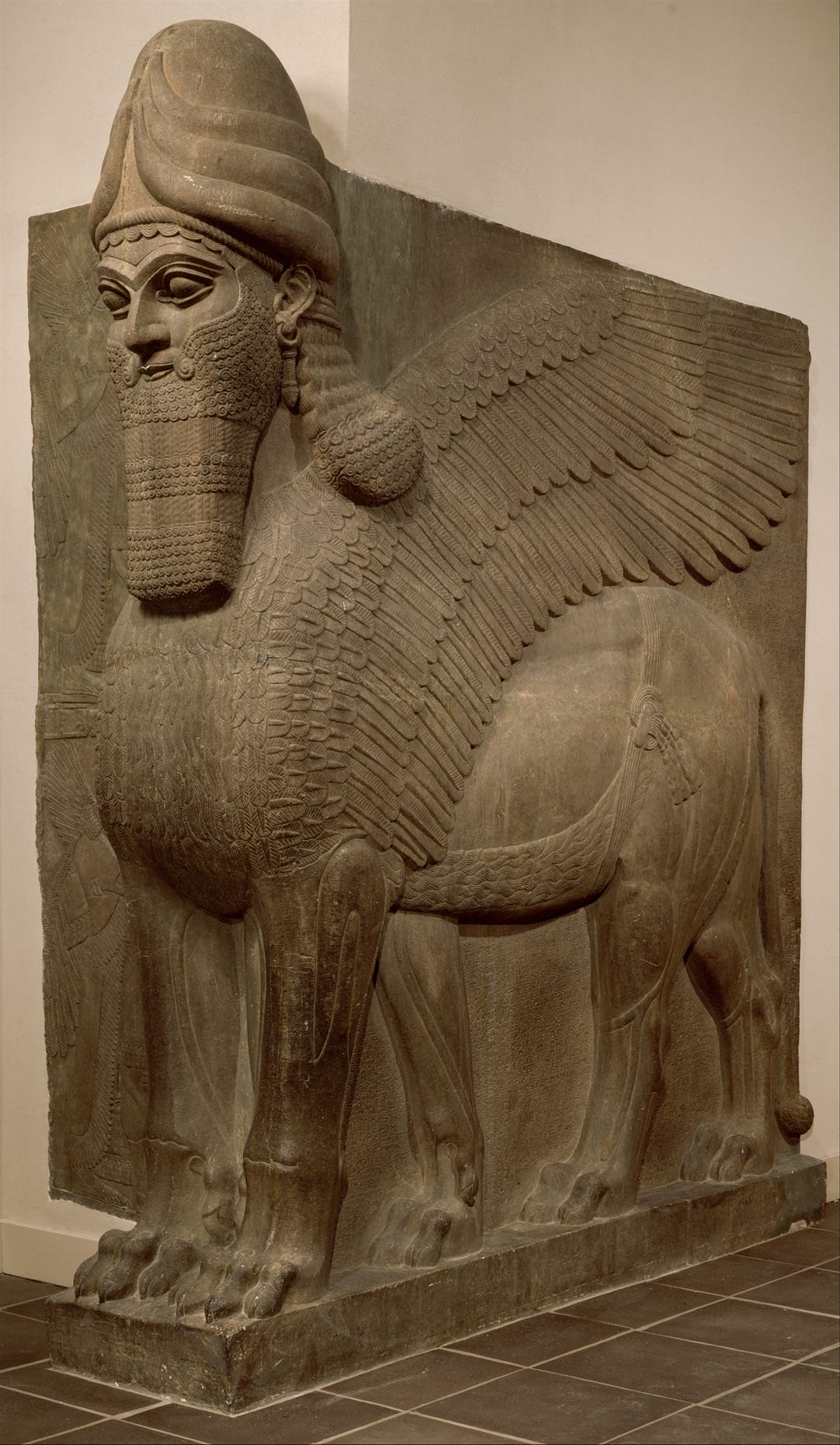Questions
1a One [masc.] who shatters has come up against you [fem.]!
The One [masc.] is YHWH who will shatter Nineveh [fem.].
1b Guard the fortification!
Watch the road!
Gird your loins!
Muster all your strength!
A warning to Nineveh! Be prepared! YHWH is coming after Nineveh and her gods.
2 For YHWH will restore the majesty of Jacob
like the majesty of Israel;
for ravagers have ravaged them
and ruined their branches.
3a The shields of his warriors are dyed red;
The powerful men are dressed in scarlet.
What is the significance of the shields and equipment being dyed red?1
Assyrian imagery and awfulness but this is not Assyria. This is an invading army. We know from history that this was the Babylonians and Medes, and we are reminded of the visions in Daniel of kingdom succeeding kingdom [Daniel 2, 7 etc.].
3b The metal of the chariot[s] shines like fire on the day of battle [“on the day of his preparation”], and their spears quiver.
4 The chariot[s] race madly through the streets;
they rush back and forth in the public squares.
What will the invading army be like?2
5a He calls his officers;
5b This, surely, is the king, or a future king of Assyria.
they stumble as they march;
they rush to her wall;
they set the covering3 in place.
The Assyrian soldiers will be overwhelmed.
6 The gates of the river are opened;
the palace trembles.
7 Her goddess is taken out and taken into exile;
her maidservants moan like doves;
they beat on their breasts.
“Her” is Nineveh. Judah is masculine. The goddess is likely Ishtar, similar to Aphrodite in Greek mythology flagging up, amongst other things, Nineveh’s sexual immorality.
8 Nineveh is like a pool of water without its water.
As they flee, she cries, “Stop! Stop!”
But there is no one who turns back.
9 Plunder the silver! Plunder the gold!
There is no end to the spoils,
an abundance of everything one could want!
Nineveh was full of treasure4 but it will all be destroyed and looted. As discussed above this was the Babylonians and Medes NOT Judah or Israel.
10 Emptiness and plundering and devastation!
Their hearts faint and their knees tremble,
All their loins shake and all their faces turn pale.
What happens to Nineveh's wealth during the conquest? What will Jesus later teach about storing up treasure [Matthew 6:19-21 etc.]?
11 Where now is the den of the lions
and the cave of the fierce lions?
There the lioness, the cub, and the lion once prowled,
and no one disturbed them.
All Mesopotamian cultures portrayed kings killing lions and in Assyria the lion is also a chaos creature.5
12 The lion tore apart enough prey for his cubs,
he strangled prey for his lioness;
he filled his lair with prey
and his den with mangled carcass.
13a “Look! I am against you [fem.]!” declares YHWH of hosts.
Here is some commentary from the Dead Sea Scrolls…
“He fills his cave with prey, his den with game” [Nahum 2:12]. This refers to the Lion of Wrath…vengeance against the Flattery-Seekers, because he used to hang men alive, as it was done in Israel in former times, for to anyone hanging alive on the tree [Deuteronomy 21:22]), The verse applies “Behold, I am against you says the Lord of Hosts”.6
Back to Nahum…
13b “I will burn her [fem.!] chariots with fire;
the sword will devour fierce lions.
I will cut off your [fem.] prey from the earth;
the voice of your messengers will no longer be heard.”
Who are the fierce lions that will be destroyed?
What will happen to Nineveh's influence after its defeat?7
V1a says that YHWH will destroy Nineveh. God has determined and will actively do this albeit using the Medes and Babylonians as his agents. The grammar does not permit otherwise. How would you begin to reconcile this with a God who is good and utterly loving in his very being?
How does this difficult passage help us right now in our place and time?
More
Bible Project Guide: The Book of Nahum»
Red and scarlet indicate huge bloodshed [Craig S. Keener and John H. Walton, eds., NIV Cultural Backgrounds Study Bible: Bringing to Life the Ancient World of Scripture (Grand Rapids, MI: Zondervan, 2016), 1531]. The Assyrians died their shields and equipment red to terrify their enemies. But just as they boasted in shedding of blood of their enemies so the same will happen to them [Douglas Mangum, ed., Lexham Context Commentary: Old Testament, Lexham Context Commentary (Bellingham, WA: Lexham Press, 2020), Na 2:3–10].
The image of the soldiers of this invading army is terrifying. Speed. Highly trained. Glinting weaponry and armour.
The Hebrew word describes a small portable roof to protect siege warriors from arrows and debris hurled at them from the fortified city wall.
"A glimpse of the treasures of Nineveh appeared in AD 1988–1990, when Iraqi archaeologists opened tombs of Assyrian queens at Nimrud, ancient Calah, 25 miles (40 kilometers) south of Nineveh. Masses of golden jewelry, dishes and bowls of gold and other valuable objects lay in the vaults." Craig S. Keener and John H. Walton, eds., NIV Cultural Backgrounds Study Bible: Bringing to Life the Ancient World of Scripture (Grand Rapids, MI: Zondervan, 2016), 1532.
Craig S. Keener and John H. Walton, eds., NIV Cultural Backgrounds Study Bible: Bringing to Life the Ancient World of Scripture (Grand Rapids, MI: Zondervan, 2016), 1532.
Michael O. Wise, Martin G. Abegg Jr., and Edward M. Cook, The Dead Sea Scrolls: A New Translation (New York: HarperOne, 2005), 245–246.
612 BCE: The Fall of Nineveh, marking the end of the Neo-Assyrian Empire. Nineveh's influence ceased after its fall in 612 BC to the Medes and Babylonians. In 539 BC the Babylon Empire fell to the Persians. In 331 BC Alexander the Great conquered Babylon.





